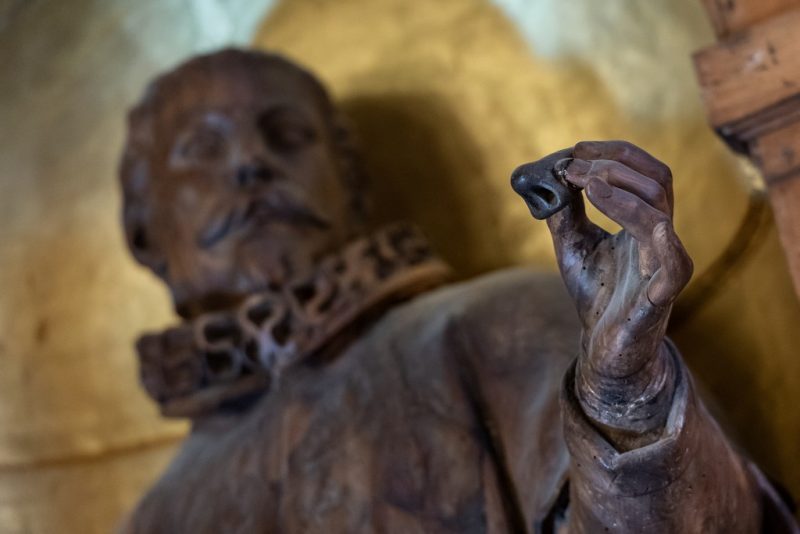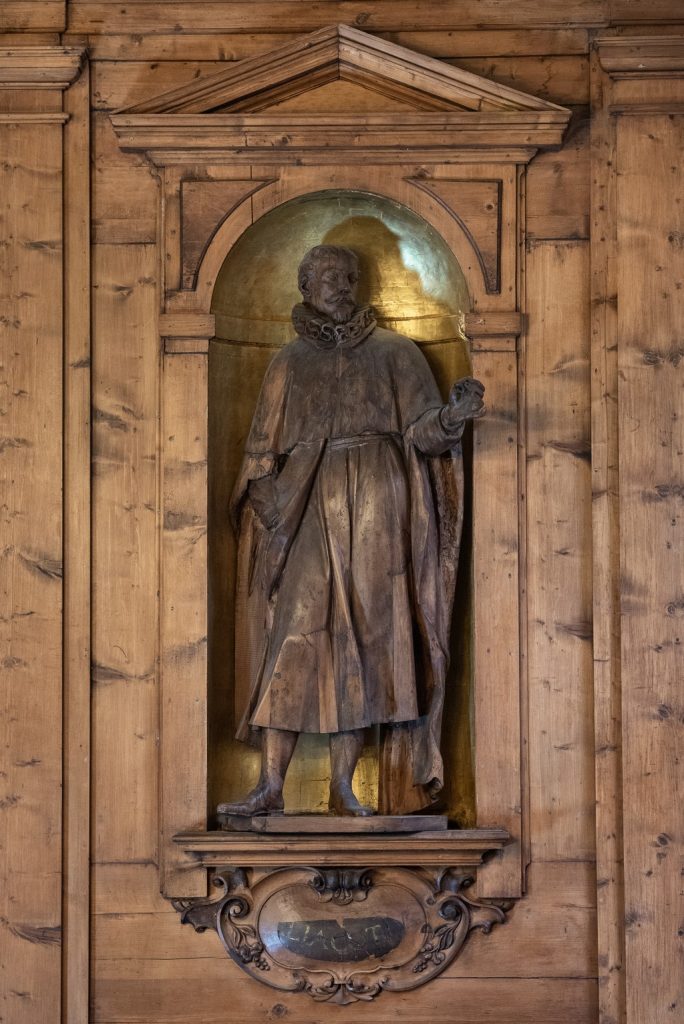The doctor in the north-eastern corner is holding an object: it is a nose.
The figure depicted is a physician of the sixteenth century, Gaspare Tagliacozzi (1545 – 1599, Bologna), a pupil of Aranzio who, in 1570, started his career as a professor of anatomy at the Bolognese Studio, after having worked as an assistant at the hospital of St. Mary of Death. Tagliacozzi was a very famous and appreciated doctor, and he is considered the father of modern cosmetic surgery.
In fact, Tagliacozzi was not only among the first physicians to have studied plastic surgery according to scientific criteria (in particular the rhinoplasty), but he had also the idea of gathering all the available information and inserting them in a scholarly medical treatise, called “De curtorum chirurgia”.
The surgical technique illustrated in the treatise and practiced by Tagliacozzi, consisted in cutting a lip of skin from the upper inner part of the patient’s arm and grafting it on the mutilated or stripped part of the face; then, it was necessary to sew the parts together and drop the patient off, sheathed in a special hooded camisole, with the arm and the face connected for three weeks.
At the end of the “welding”, when the new skin was sufficiently nourished and the graft was ready, the surgeon had to suture the parts and keep them steady with special metal masks for a period of up to twelve months.
And that is the reason why this statue is holding a nose.

